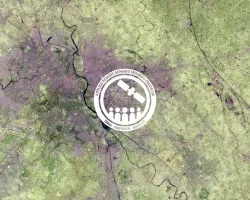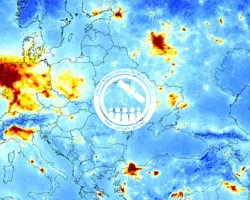Description
This training will help scientists and partners working on Earth science-based applications increase the usability and relevance of their products, datasets, and tools - described here as “applications.” Based on the NASA Earth Science Applications Guidebook, the training uses a narrative approach to introduce the Applications Pathway and non-science success factors necessary to building sustainable Earth Science applications, including project management and team collaboration, partner engagement, communications, and monitoring and evaluation. Participants will improve their ability to build applications that improve people’s lives and advance solutions to climate change, health, food insecurity, and other pressing challenges.
This training offers a flexible learning experience, allowing participants to choose to explore the Applications Pathway through any of the three storylines that are most relevant to them: the early career scientist, the partner new to remote sensing, and the experienced researcher.
Enroll Here
Note: If you do not already have an account for the ARSET learning management system, you will be prompted to create an account before you can enroll yourself in this training.
Participants will be able to meet learning objectives from the main character’s perspective in each module: Ana, An early career researcher; Kyle, a community partner; and Dinesh, an experienced researcher new to remote sensing:
- Identify the five steps in the Applications Pathway for developing an Earth observations (EO) application, from concept to user adoption
- Explore ways to build and maintain effective collaborations
- Apply strategies to design and implement a plan for leading effective communications
- Explore project management approaches
- Identify approaches for assessing impact and ensuring societal benefit of the application
This course is open and available to any interested learner, but each module is attuned to the likely interests of these audiences:
- Ana’s story: early career scientists
- Kyle’s story: partners new to remote sensing
- Dinesh’s story: experienced researchers new to building applications
- Online Self-Paced training consisting of three module options
- Available to enroll yourself at any time, no time limit for completion
Each online self-paced module follows the five key steps of the NASA Remote Sensing Applications Pathway. These pathways address important considerations and decisions regarding collaboration and user engagement, communications, project management and measuring impact.
Ana is a post-doctoral researcher interested in climate change ecology, specifically how climate change will affect birds in their winter habitats. She plans to build an application that will generate information on bird distribution in winter. Joining forces with local conservation organizations, she hopes the information will persuade government officials and private landowners to protect land for birds.
Kyle, manager of the child health program at a city health center, wants to explore the links between air quality and asthma in the community. Concerned about pollution from a nearby industrial area, Kyle teams up with partners to learn how ground and satellite data can be combined to produce information useful to the community.
Dinesh has spent two decades as a hydrologist at a NASA research center. He has some novel ideas on indicators that might provide “earlier” early warning on drought. He collaborates with a humanitarian agency analyzing food security in a drought-affected country to see how his research can strengthen their warning systems.



